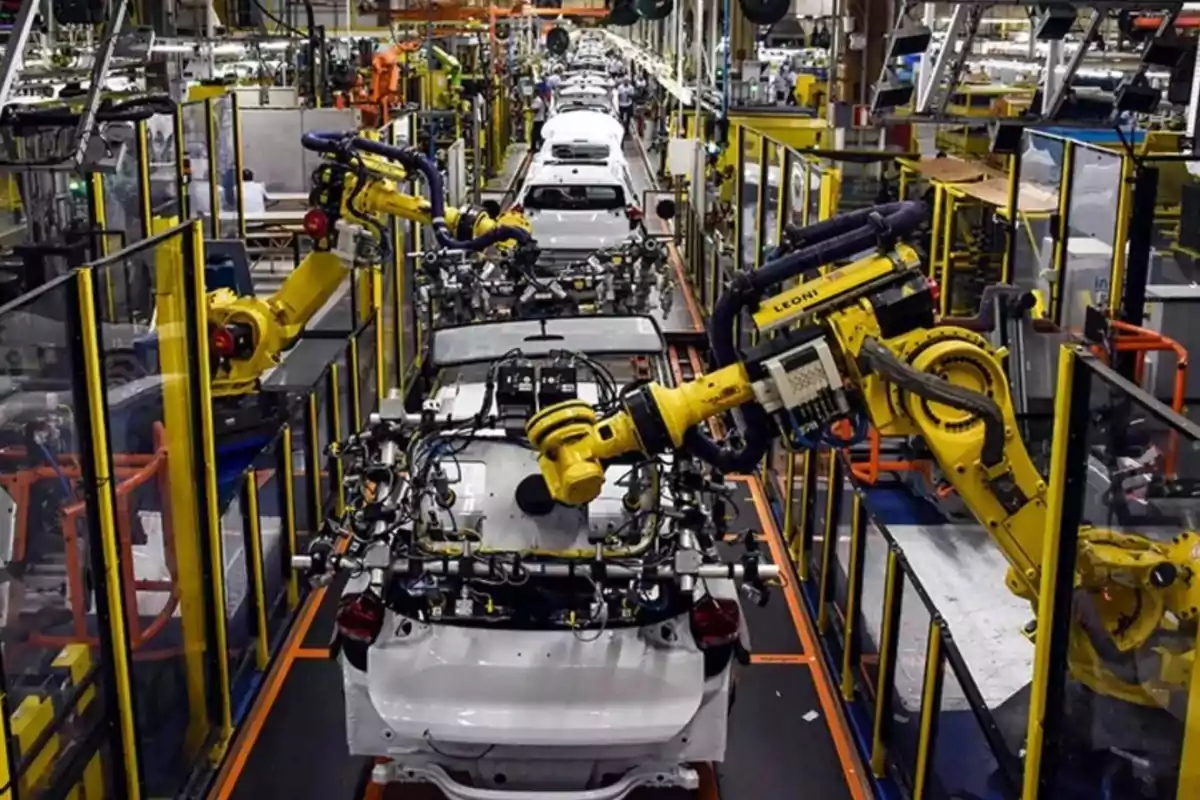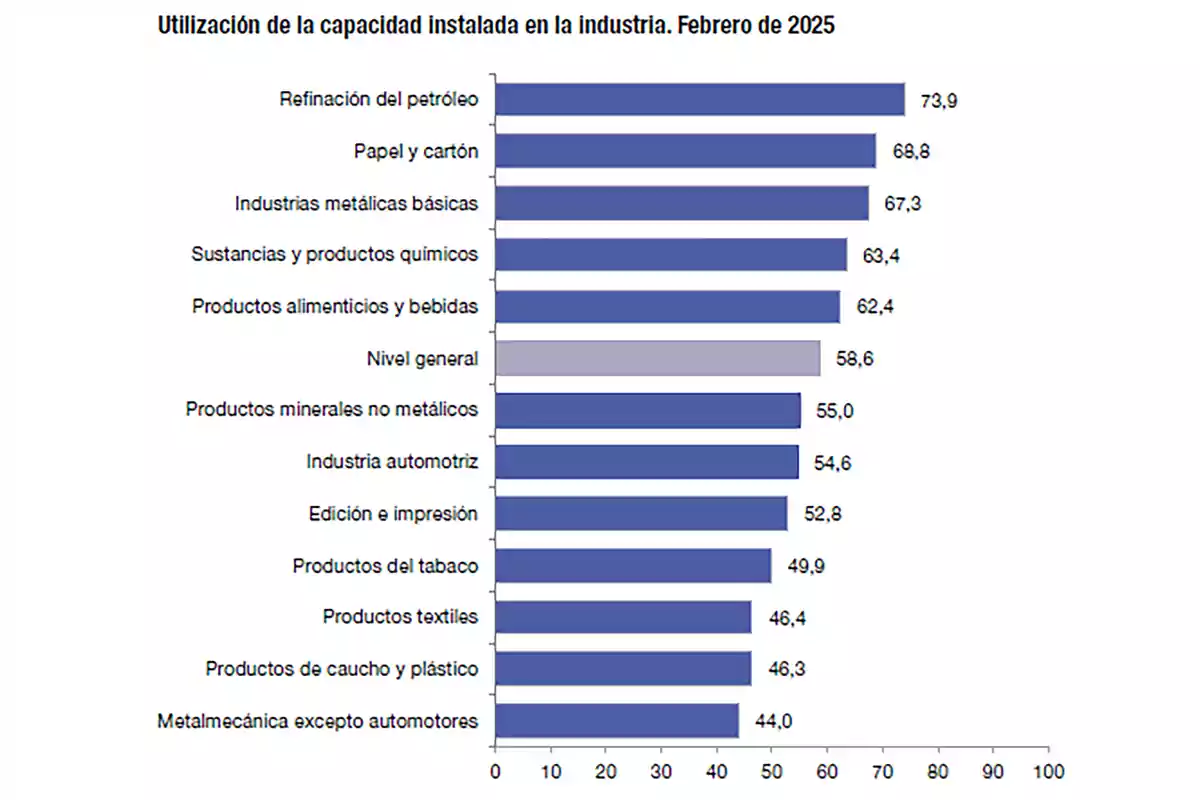
The installed capacity of the automotive and food industry continues to increase
Thanks to Milei, the industrial sector experienced a 58.6% increase in employment, according to INDEC
The Argentinian industry recorded in February a level of installed capacity utilization of 58.6%, one percentage point above the 57.6% of the previous year, according to data released by the National Institute of Statistics and Censuses (INDEC). It is relevant due to the positive trend it reflects and the strong rebound of key sectors to continue the country's productive reactivation.
Among the segments that stood out the most is the automotive industry, which reached 54.6% capacity utilization compared to 47.3% in February 2023, showing a significant recovery in vehicle production. The same occurred with the food and beverage sector, which rose to 62.4% from 58.1% year-on-year, driven by greater oilseed milling and an increase in beverage production.

The INDEC report also details that five industrial sectors exceeded the general average of 58.6%. Leading the list is oil refining with 73.9%, followed by paper and cardboard (68.8%), basic metal industries (67.3%), chemical substances and products (63.4%), and food and beverages (62.4%).
On the other hand, several sectors remain below the average, although some of them have begun to show encouraging signs. For example, the metalworking sector, except for automotive, while operating at 44.0% of its capacity, improved substantially compared to 37.3% the previous year. This growth was driven by a greater production of agricultural machinery and household appliances. Tractors, harvesters, and self-propelled sprayers were key players in this recovery, according to the gathered information.

Meanwhile, oilseed milling was one of the major drivers of the food sector's rebound. The Secretariat of Agriculture, Livestock, and Fisheries (SAGyP) reported an 11.7% year-on-year increase in soybean grain intake to processing plants, which favored greater utilization of the sector's industrial facilities.
Regarding other manufacturing sectors, non-metallic mineral products recorded a 55.0% utilization, publishing and printing a 52.8%, tobacco products a 49.9%, textile products a 46.4%, and rubber and plastic products a 46.3%. The latter continue to be affected by the decline in consumption, although a gradual reversal is expected accompanied by a reactivation of purchasing power.
More posts: